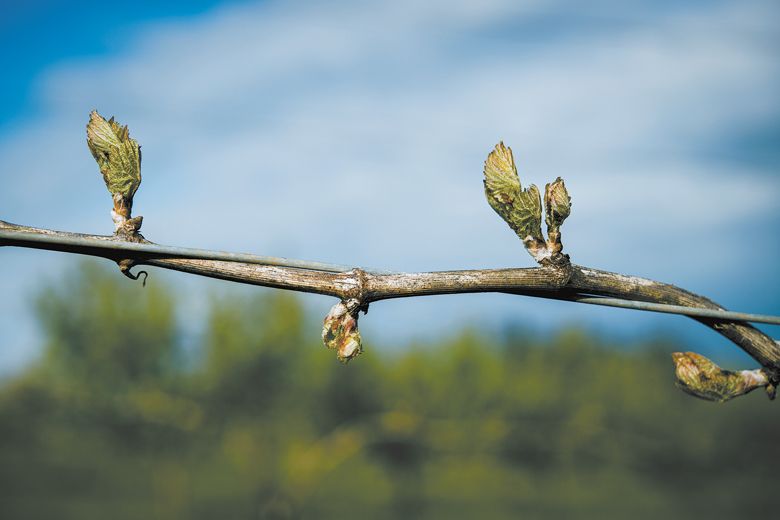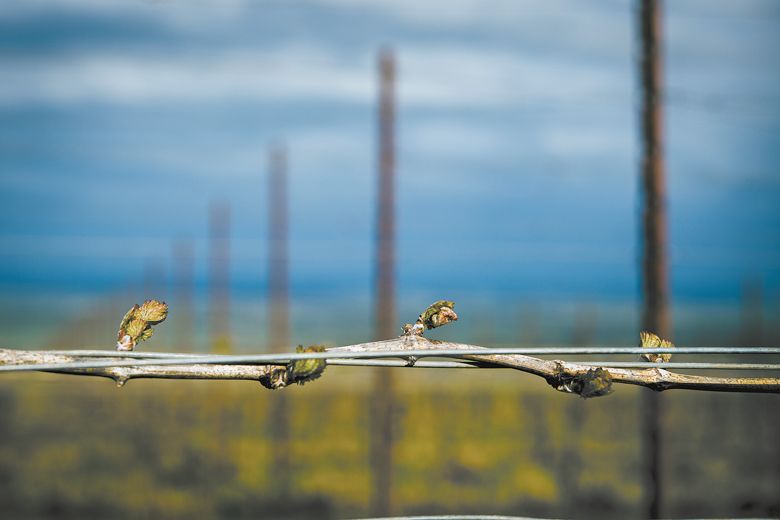Freaky Frost
Vineyards across the Willamette Valley impacted


After winter unexpectedly revisited the region last month, it caused unprecedented damage. Winegrapes, still in their initial formative stage known as “bud break” or “bud burst,” suffered what many believe is the worst frost damage incident in memory.
First media reports have beaten the gloom and doom drum, including one headline proclaiming, “Willamette Valley could lose half its grape crop…” Though eye-catching and dramatic, such a sweeping proclamation seems rather ambiguous. Damage inflicted by cold and frost conditions remain site-specific; every vineyard and even individual vineyard blocks require discrete evaluation.
Leigh Bartholomew, Director of Viticulture for McMinnville-based Results Partners, offers a more nuanced perspective to the overall picture. Founded in 1985, Results Partners, one of the oldest and, by far the largest vineyard management company in Oregon.
‘It’s too early to tell,” she said. “Soon we will have a much better idea of where and how much the damage there really is. We do know the point of bud development is a key factor, and Chardonnay was the most susceptible, followed closely by Pinot Noir and Pinot Gris. Yet, in recent years, the Willamette Valley has seen more plantings above 600-foot elevation, where little, if any, damage has been observed.”
Bartholomew noted when primary buds are destroyed or severely damaged, they will either fall off or stop growing, before secondary buds. If the primary bud is still capable of producing some fruit, both will grow. Quantity will be cut considerably, but there is no negative effect on quality. “We have to farm accordingly,” she said. “With both buds growing, flowering, forming clusters, you want to get all the crop you can, but the primary will ripen before the secondary, so you end up with two harvests.”
Results Partners also farms in the Columbia Gorge and the Walla Walla Valley where, according to vineyard managers, only minor damage occurred. Bartholomew said, “In both regions, we farm primarily warmer climate varieties, which go through bud break later, so the grapevines there sustained little to no damage.” In southern Oregon, weather conditions were not as severe and the principal grape varietals ripen later. However, unlike the northern part of the state, higher elevation vineyards, particularly in the Rogue Valley, are more susceptible to damage from extended periods of freezing temperatures.
It is informative to speculate just how severe the blow to Oregon’s wine industry might be from this freaky frost event. The Willamette Valley remains home to all the state’s high-end Pinot Noir, Chardonnay and Pinot Gris producers. What if the three most-produced varieties, Pinot Noir, Pinot Gris and Chardonnay decrease by 50 percent?
Annually, Willamette Valley Pinot Noir production averages 51,000 tons or 82 percent of the state’s 62,000 total tons of Oregon’s signature wine variety. Consider further that, at 12,400 tons, Pinot Gris production comprises 80 percent of the state’s 15,500 total and, at 5,400 tons, Chardonnay claims 72 percent of the 7,600-ton state total. Combined, they represent roughly 69-70 percent of Oregon’s wine grapes.
Only time will tell how grapevines across the state fared after this historic April frost. While quantity may be affected, freezing temperatures did not affect the future quality of the wine produced in 2022. One other result is certain: Oregon wine grape growers are made of sturdy stock and will weather this storm like they have others in the past.










